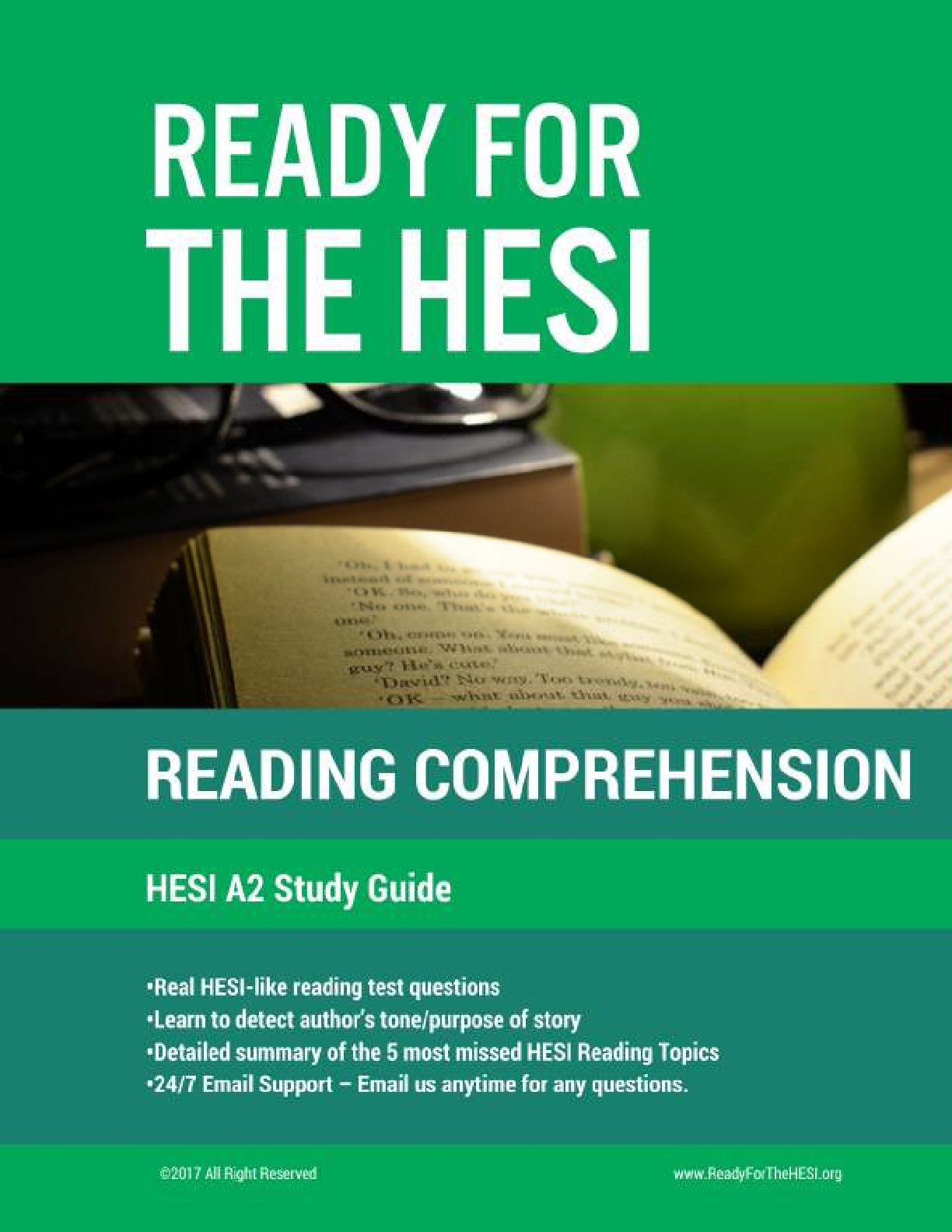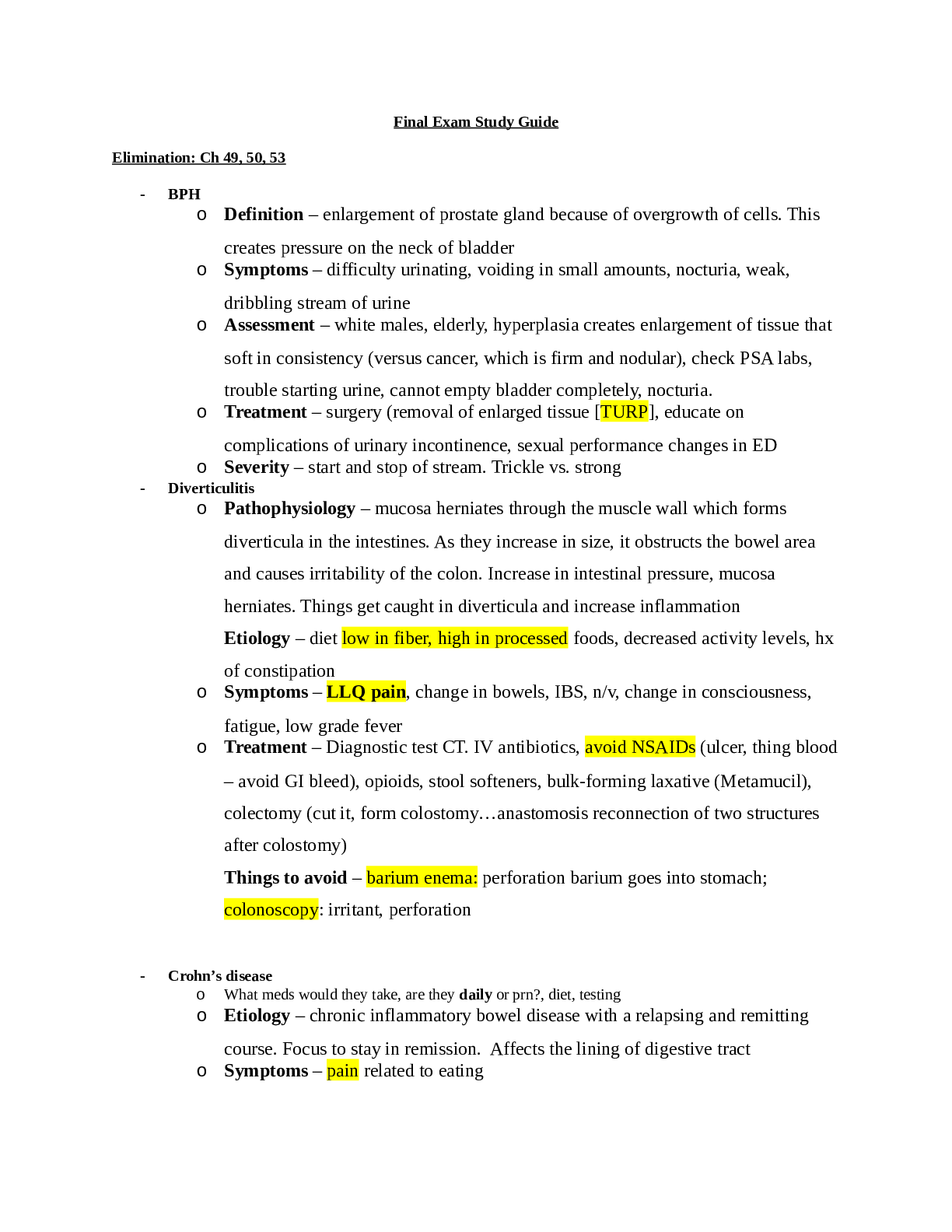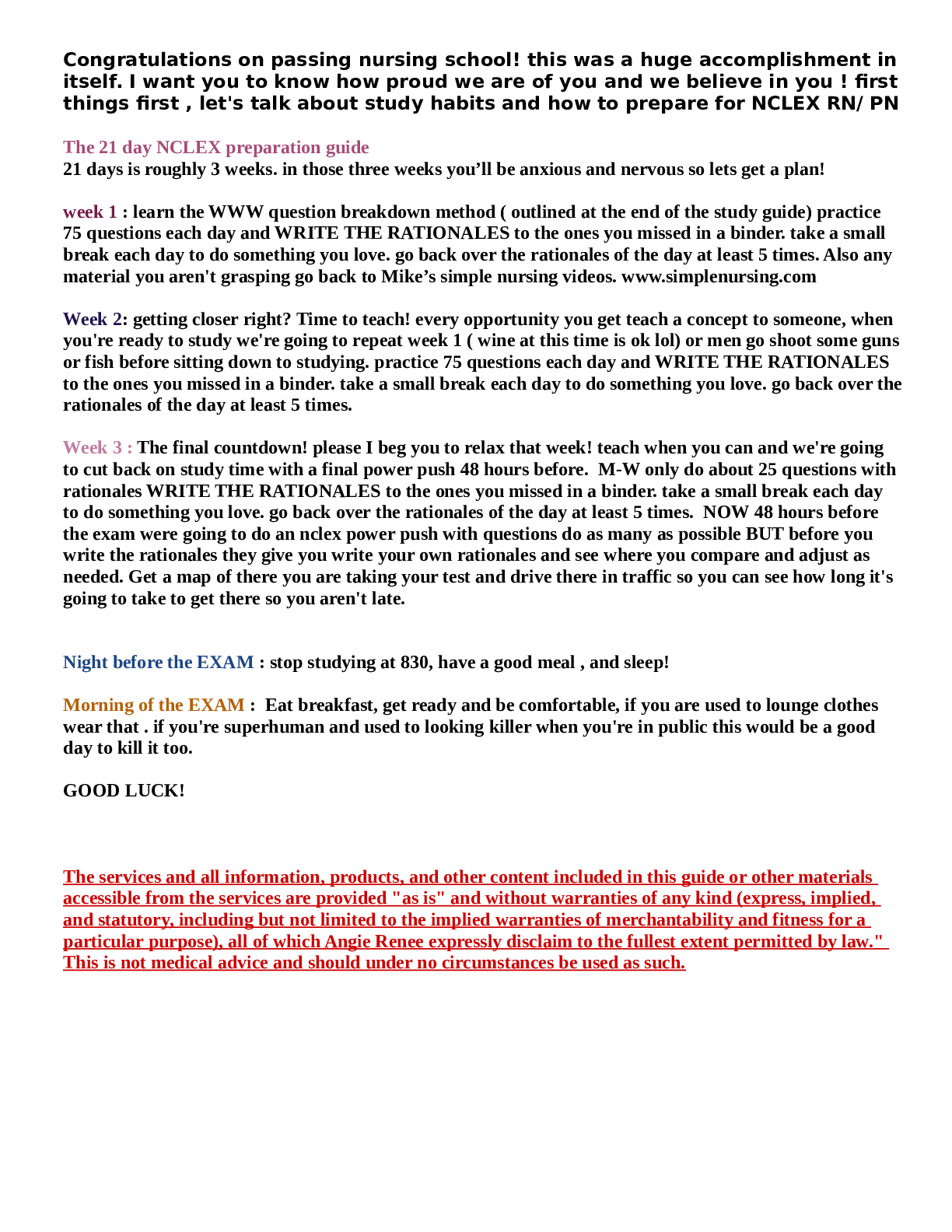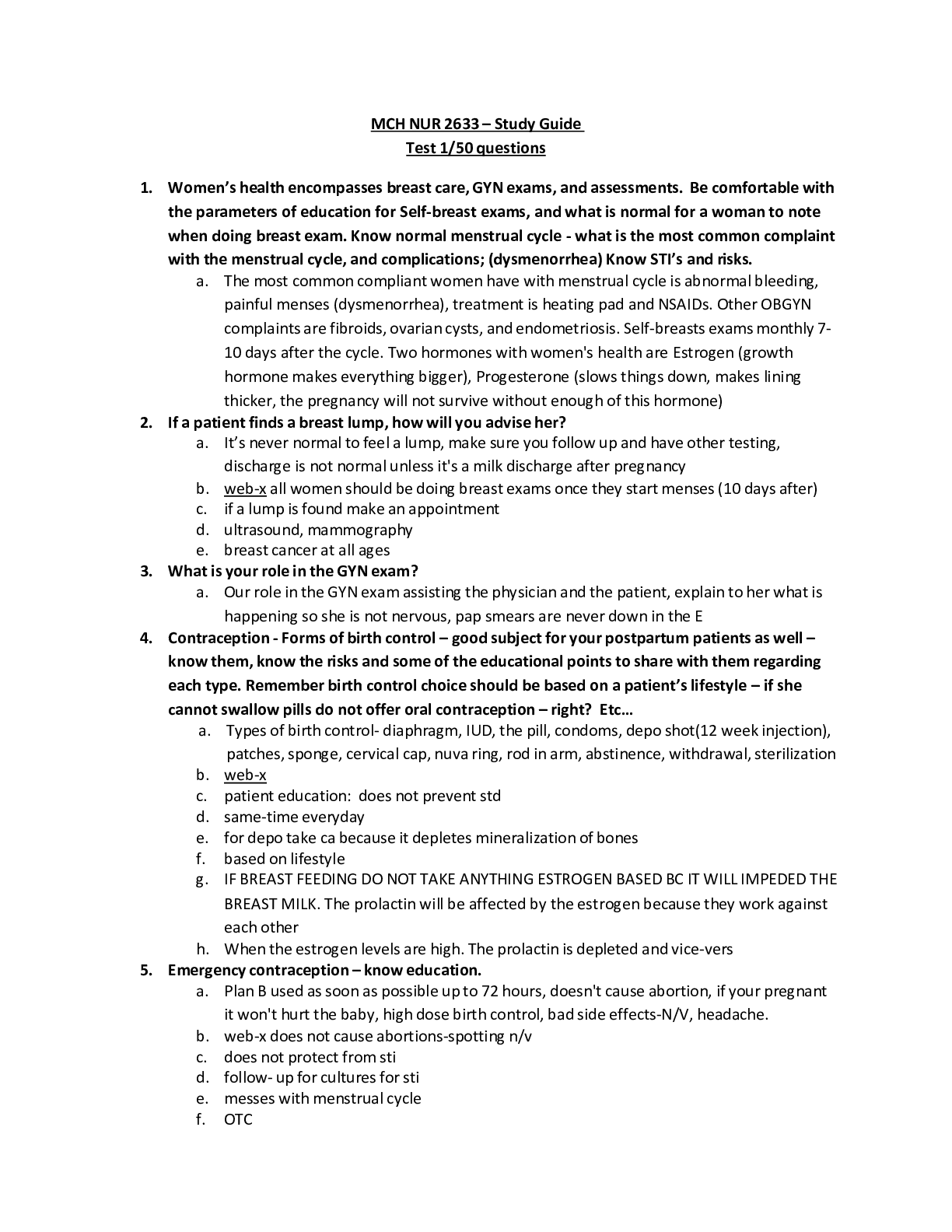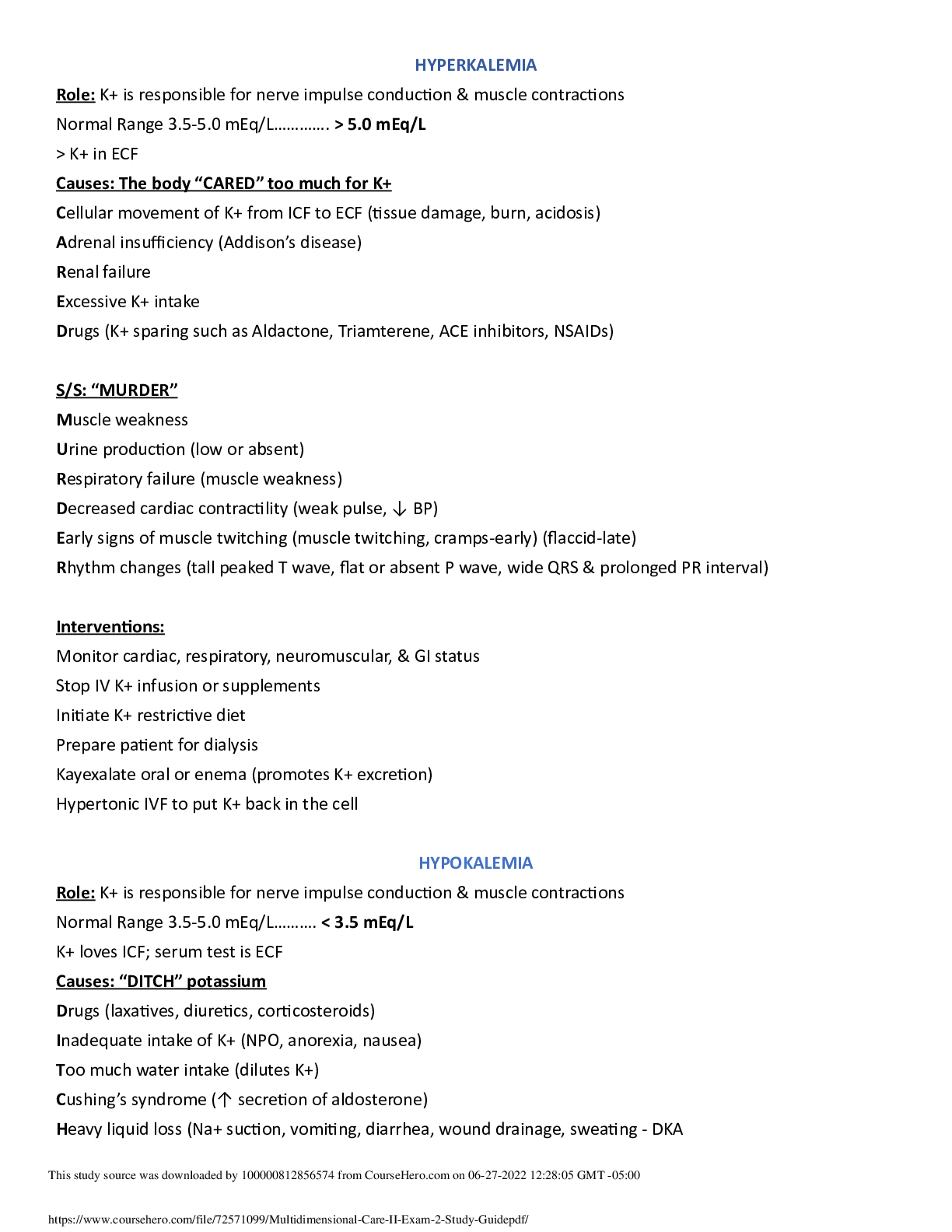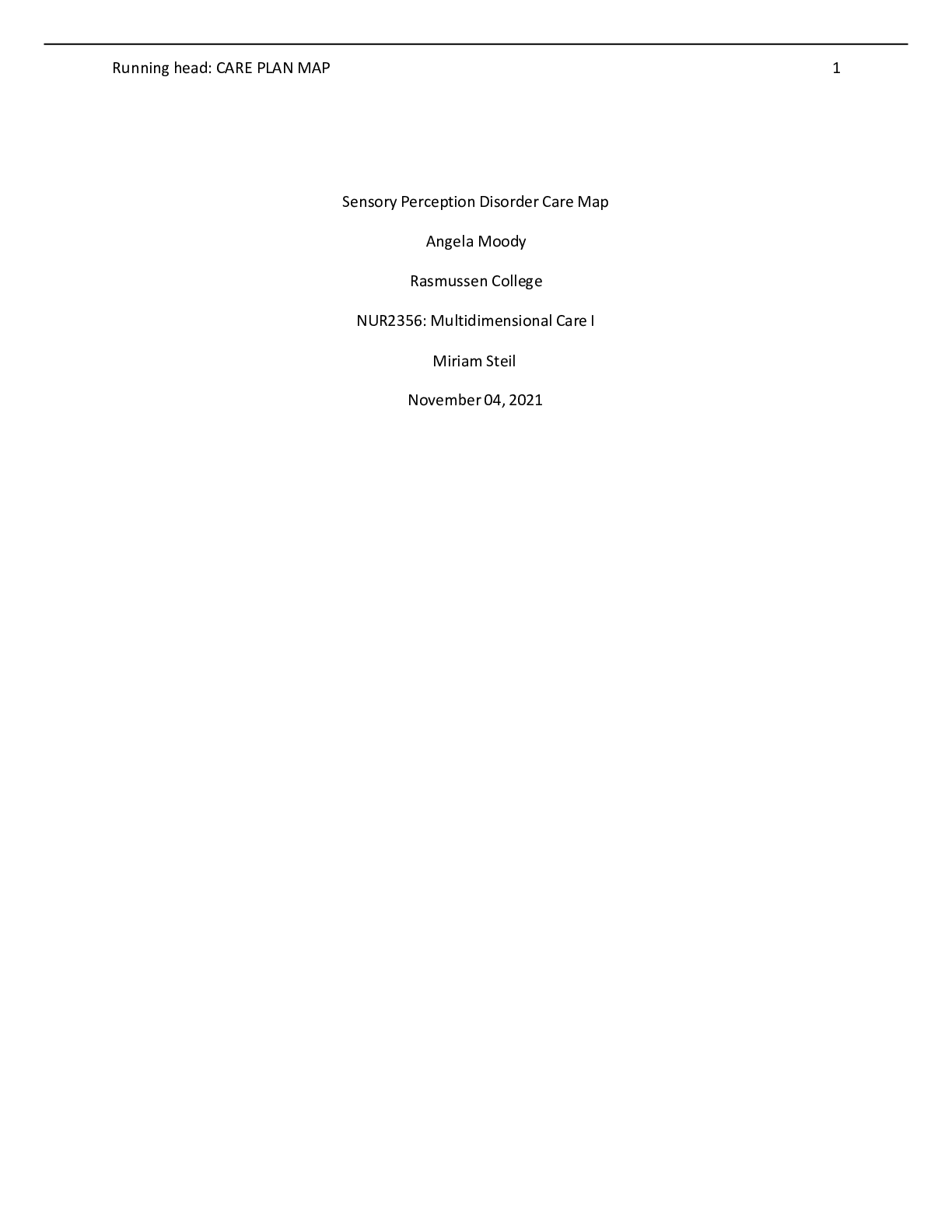BioChemistry > STUDY GUIDE > Queens University BCHM-218-SOS-Midterm-Review-Packet-Final-VERIFIED BY EXPERTS 2021-GRADED A+ (All)
Queens University BCHM-218-SOS-Midterm-Review-Packet-Final-VERIFIED BY EXPERTS 2021-GRADED A+
Document Content and Description Below
BCHM 218 SOS Midterm Review Packet Allingham: Information Molecules: DNA, RNA and Protein The Central Dogma: DNA –(transcription)-> RNA – (Translation) Protein Exception: Viruses ... can do reverse transcription DNA is transcript for mRNA mRNA moves out of the nucleus and is translated with the help of tRNA and ribosomes The ribosome is made up of rRNA o two subunits (small and large) assemble on the mRNA molecule to form a complex Recursive system – all feeds back on itself (eg. proteins are required to make DNA) Abundance of other functional RNAs Chemical Properties: Affinity determines specificity in molecular interactions Affinity is determined by weak molecular interactions Nucleic acids: o Base : AGTC – DNA, AGCU – RNA hydrogen bonding o Ribose (5 carbon) sugar o Phosphate – bound to 5’ C of ribose Phosphodiester bond Bound to next nucleotide on 3’ sugar Don’t bother memorizing DNA modifications – very unlikely a question will be asked on specifics Know that they can be modified and that these modifications change the ability of proteins to bind DNA sequences Proteins: o Amino acid contains an amine, a carboxylic acid, a methyl and an R group o Amino acid residue the amino acid with an H2O molecule removed o Peptide – a short chain of amino acid residues o Oligopeptide – 2 to 20 amino acid residues o Polypeptide – over 20 amino acid residues (i.e. a long chain) o Always read N-terminal to C-terminal o Know that amino acids can be modified – don’t need to memorize specific modifications until learning about histonesChemical Bonds “Strong” Chemical Bonds: Covalent bond – electrons shared o a single bond can rotate o a double bond creates a planar shape groups are locked in place – can’t rotate o Peptide bonds – have resonance – like a double bond therefore peptide bonds are planar and attached groups can’t rotate groups are located in the same plane o Know polar vs non-polar covalent bonds Ionic bond – electrons transferred o Positive charged aas – Lys, Arg, His (at pH’s below 6) o Negative charged aas – Glu, Asp o Can form ionic bonds with each other in the protein between oppositely charged aas o Ionic bonds can also be formed with cofactors like Mg [Show More]
Last updated: 2 years ago
Preview 1 out of 19 pages
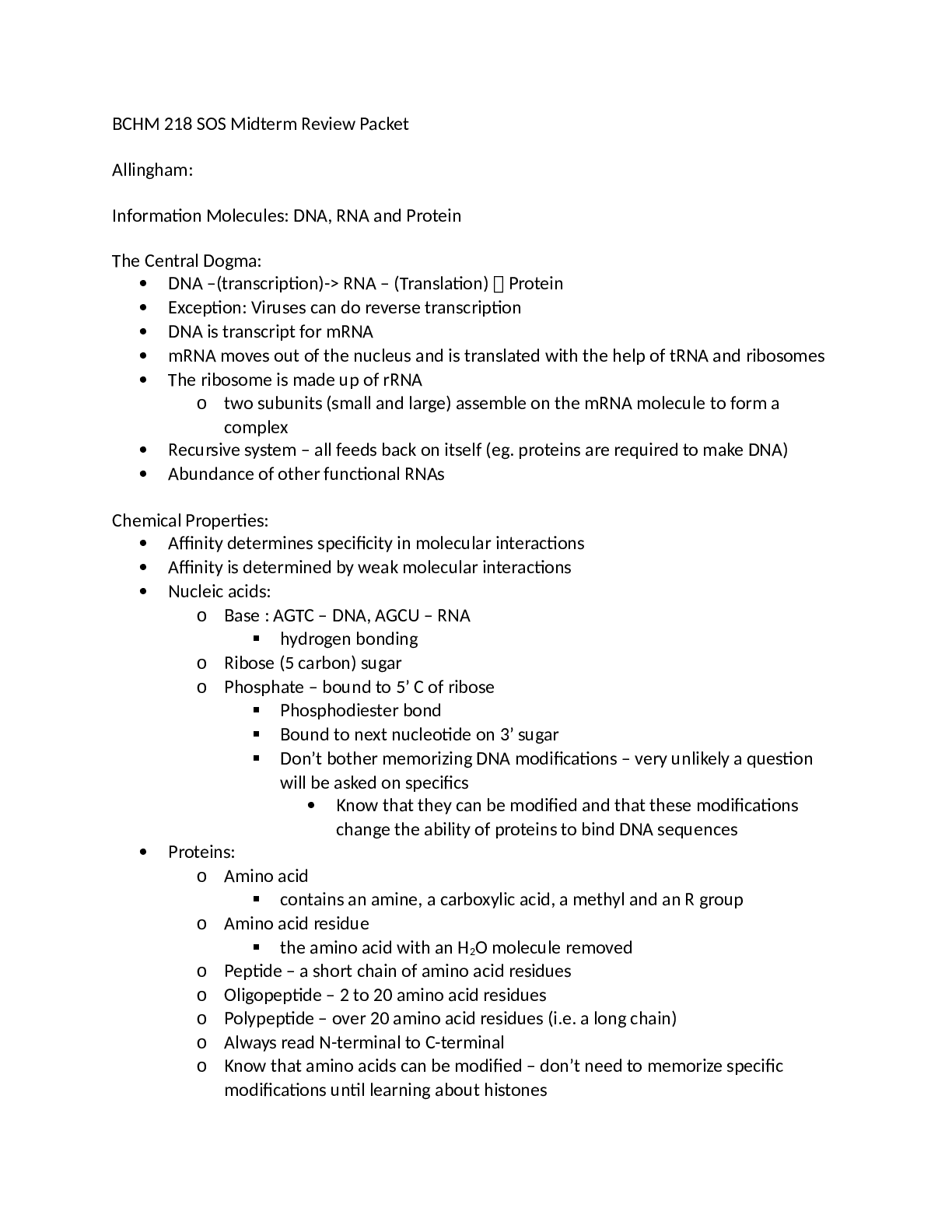
Buy this document to get the full access instantly
Instant Download Access after purchase
Buy NowInstant download
We Accept:

Reviews( 0 )
$13.00
Can't find what you want? Try our AI powered Search
Document information
Connected school, study & course
About the document
Uploaded On
May 31, 2021
Number of pages
19
Written in
Additional information
This document has been written for:
Uploaded
May 31, 2021
Downloads
0
Views
81

